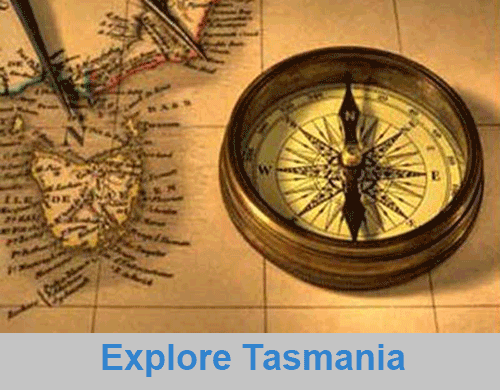
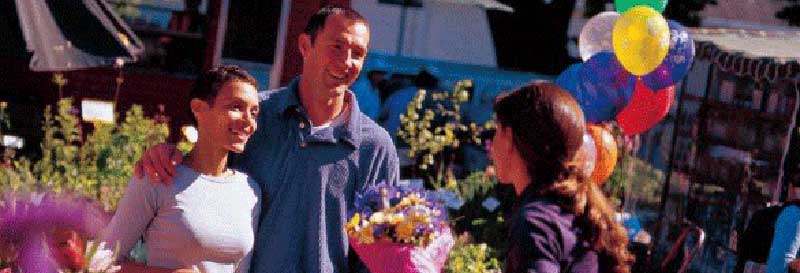
Markets
Burnie
Burnie Farmers Market
Wivenhoe Showground, 10 Smith Street, Burnie, Tas
Parking from Smith Street.
Phone: (03) 6438 4170
Open 1st and 3rd Saturday each month 8.00 am - noon.
Website >

Wynyard
Foreshore Market
Foreshore, Old Bass Highway between Lockett and Boswick Streets, Wynyard, Tas
Phone: 0472 733 387
Open 1st and 3rd Sunday every month
Website >

Save A Buck Market
28 Goldie Street, Wynyard, Tas
Phone: 0455 156 980
Open Friday and Saturday 10.00 am - 4.00 pm.
Website >

Penguin
Penguin Undercover Market
11 Arnold Street, Penguin, Tas
Phone: 0400 903 031
Open every Sunday 9.00 am - 3.00 pm
Website >

Ulverstone
Cradle Coast Farmer's Market
Wharf Road, Ulverstone, Tas
Phone: 0459 147 271
Open 2nd and 4th Sundays 8.30 am - 12.30 pm
Website >

Latrobe
Love Latrobe Village Market
169-171 Gilbert Street, Latrobe, Tas
Open every Sunday 8am - 1pm (9am-1pm during winter months)
Phone: 0467 366 206
Website >

Don
The Don Market
17 Forth Road, Don, Tas
Phone: 0438 278 730
Open every Sunday 9.00 am - 2.30 pm
Website >

Devonport
Love Devonport Farmers Market
The Showgrounds, 86A Gunn Street, Devonport, Tas
Open 2nd & 4th Saturdays of the month (8.30am-12noon)
Phone: 0467 366 206
Website
Twilight Markets and Street Eats
Providore Place, 17 Oldaker Street, Devonport, Tas
Phone: (03) 6420 2900
Open Friday nights from 4.00 pm to 8.00 pm
Website >


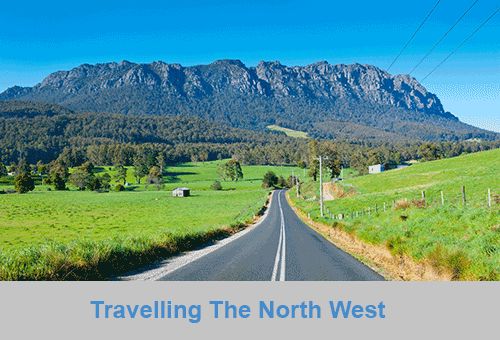
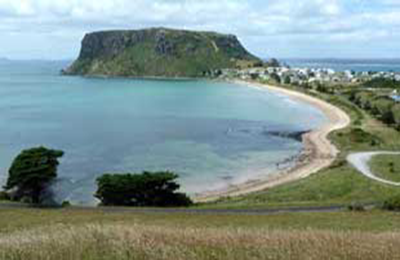
North West Coast
The North West coast extends from Burnie all the way west to Cape Grim, Tasmania's rugged north-west corner. Along the way are the beachside towns and villages of Wynyard, Boat Harbour Beach, Stanley and Smithton, as well as the rugged volcanic headlands od The Nut (Circular Head), Rocky Cape and Table Cape.
Full Itinerary


Central Coast
The first European settlement of Tasmania's Central Coast commenced in the 1840s, the rich basalt soil proved ideal for cropping, and today agriculture is the principal contributor to the area’s economy. Motorists travelling along the north-west of Tasmania are well served by the National Highway. Central Coast, however, is fortunate to have retained a small section of ‘old highway’. This scenic coastal detour hugs the headlands and sandy shores from Ulverstone through to Howth and is well worth the extra time taken to travel this scenic route.
Full Itinerary


Central Hinterland
Boasting rolling farmland, the hinterland of Tasmania's central coast is home to some of the region's finest agriculture and local produce, its narrow roads making their way through lush farmlands on their way to the alpine terrain of Cradle Mountain. The area is world-renowned for its bush-walking, mountain ranges and canyons, and laid-back small towns set againt mountainous backdrops.
Full Itinerary


North West Hinterland
The area is dominated by the Tarkine, a wilderness area containing a wildly diverse landscape, a world of natural treasures including Australia's largest patch of temperate rainforest, mountain ranges, wild river and cave systems and buttongrass moorlands. Waterways can be explored by canoe, kayak and riverboat cruises through forests of blackwood, myrtle and celery top pine all the way to the sea.
Full Itinerary


Meander Valley
Set against the backdrop of the Great Western Tiers, the Mradner Valley is located at the western end of the Central Coasy Hinterland, located midway between Launceston and Devonport. Dotted among the farms of the area are numerous small towns, each with their own individual character and colonial-era charm. Deloraine, on the banks of the Meander River, has become a centre for artists and craftspeople, drawn by the lifestyle and inspired by the stunning scenery.
Full Itinerary


West Coast
2 to 3 hours drive from Devonport and Burnie, Tasmania's West Coast region is made up of serene natural harbours, rugged coast, densely forested mountain ranges, fast flowing rivers, steep gorges, rainforest wilderness and ghost towns. The region has some of the most pristine and beautiful wilderness in the world, encapsulated in the World Heritage listed Franklin-Gordon Wild Rivers National Park. Bushwalkers are rewarded by spectacular nature sights. Even the less energetic can enjoy the untouched rainforests while cruising the Gordon and Pieman Rivers.
Full Itinerary
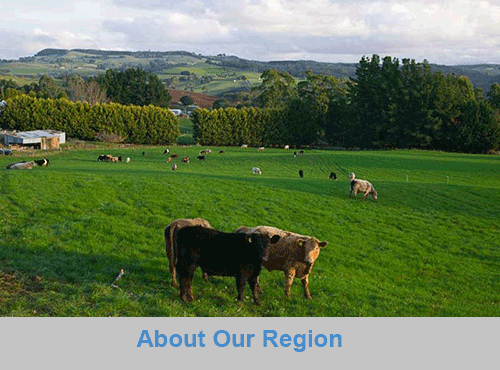
The North West region of Tasmania covers a vast area including the towns of Devonport, Burnie, Cradle Mountain National Park and the Tasmanian west coast as far south as Strahan and Queenstown. The gateway to this region is Devonport, with an airport and the Spirit of Tasmania (ferry between Victoria and Tasmania) terminus. The port handles much of the export produce from the rich agricultural areas around Devonport. The town itself is used as an arrival or departure port for most travellers rather than a destination itself.
A major farming area stretches from Devonport along the coast to Stanley. Many of Australia's finest vegetable and dairy produce come from this region. Stanley is an historic fishing village with a large volcanic headland - The Nut - accessible by chairlift. Far out to the north-west in the stormy waters of Bass Strait, King Island consists very much of uninhabited bushland teeming with wildlife. The island produces some of the best dairy products, for which it is famous.
Cradle Mountain-Lake St Clair National Park, in Tasmania's World Heritage Wilderness Area, offers a rugged environment with many wilderness retreats and walking tracks. Icy streams, ancient pines, glacial lakes and wildlife surround the jagged contours of Cradle Mountain. The area is one of the most glaciated in Australia and includes Tasmania's highest mountain, Mt Ossa (1617 metres) and Lake St Clair, Australia's deepest natural freshwater lake, the source of the River Derwent.
The West Coast area of Tasmania is made up of rugged coast, mountain ranges, flowing rivers, steep gorges, rainforest wilderness and ghost towns. Strahan is situated on Macquarie Harbour and is the starting point for Gordon River cruises and air tours over the South West Wilderness. Strahan is the only town on this rugged and dangerous coast.
